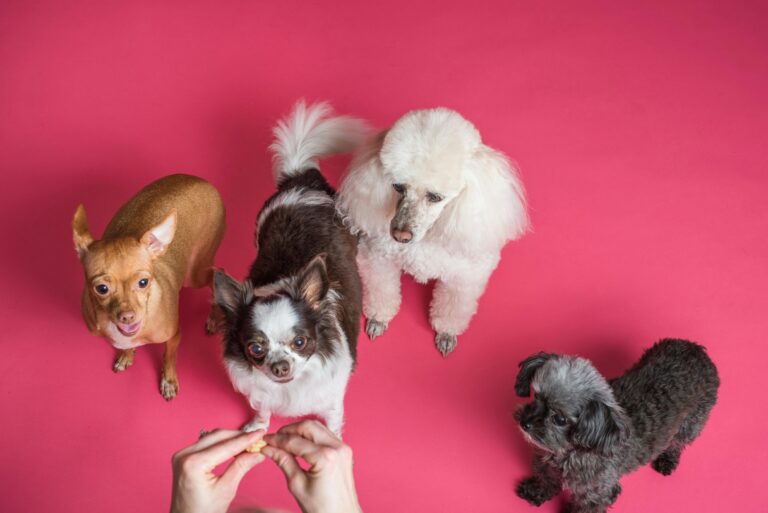Many owners think obedience training is something you do once and then you’re finished. The truth is, training is a lifelong journey that evolves with your dog’s age, personality, and environment. Just like people, dogs learn differently at various stages of life.
Whether you’re working with a playful puppy, a teenage troublemaker, a reliable adult, or a senior who needs gentle guidance, obedience training adapts to meet your dog where they are. This guide will walk you through each stage and show you how to keep your dog’s training strong for life.
Puppy Training: Building the Foundation (8 Weeks – 6 Months)
Puppyhood is the most critical stage for establishing good habits. Your pup is like a sponge, soaking up every interaction and forming lifelong associations.
Core training goals for puppies:
- Housebreaking and crate training
- Basic commands: sit, down, come, place
- Socialization with people, dogs, and environments
- Leash introduction without pulling
- Confidence-building with new sights, sounds, and textures
Short, fun training sessions work best at this stage. Puppies thrive on structure and consistency. If you skip these fundamentals, problem behaviors may show up later.
Adolescent Training: Navigating the Teenage Phase (6 Months – 2 Years)
This is the stage where many owners feel frustrated. Your once-compliant puppy may suddenly start testing boundaries. Hormones, independence, and curiosity make adolescence the most challenging phase.
Training focus for adolescents:
- Reinforcing recall under distractions
- Leash manners around people, dogs, and wildlife
- Impulse control with commands like “leave it” and “wait”
- Structured play to reduce overexcitement
- Continued socialization to prevent reactivity
Adolescence is when bad habits like jumping, barking, or pulling can become ingrained if not corrected. Consistency is key.
Adult Training: Reinforcing Reliability (2 – 7 Years)
By adulthood, most dogs know the basics, but consistency determines whether they’ll listen every time or only when it’s convenient. Adult dogs need regular reinforcement and new challenges to prevent regression.
Training goals for adults:
- Proofing commands in real-world settings
- Off-leash reliability
- Advanced obedience or sport training for mental enrichment
- Problem-solving for behavioral issues like anxiety or reactivity
- Maintaining structured routines
This is also the stage where many owners want to enjoy activities like hiking, camping, or visiting cafés with their dogs. A strong foundation of obedience makes these experiences stress-free and enjoyable.
Senior Training: Gentle Guidance and Mental Stimulation (7+ Years)
Older dogs may slow down physically, but training is just as important. Obedience keeps their minds sharp, maintains good manners, and strengthens the bond you’ve built over the years.
Training goals for seniors:
- Low-impact reinforcement of sit, stay, and place
- Mental stimulation with puzzle games or nose work
- Adjusted exercise to match mobility
- Continued structure to reduce anxiety
- Confidence in new environments with extra patience
Training seniors isn’t about teaching new tricks, it’s about maintaining confidence, health, and connection.
Why Structure Matters at Every Stage
No matter your dog’s age, structure is what ties training together. Without it, commands become optional and behavior deteriorates.
Our blog on The Fastest Way to Improve Your Dog’s Behavior at Home explains how consistent structure speeds up results. Whether you’re housebreaking a puppy or managing a senior’s routine, structure is the backbone of success.
The Role of Professional Training
Training doesn’t look the same at every stage, which is why professional guidance makes such a difference. Our Basic & Advanced Obedience Program is designed to adapt to your dog’s life stage, whether you need help with puppy foundations, adolescent problem behaviors, or refining adult obedience.
Common Training Mistakes at Every Stage
- Puppies: Skipping socialization or waiting too long to start training
- Adolescents: Allowing inconsistency and ignoring unwanted behaviors
- Adults: Failing to reinforce training, leading to regression
- Seniors: Overlooking mental enrichment and assuming they no longer need training
Avoiding these pitfalls ensures steady progress and long-term reliability.
External Resource: Expert Insights
For additional insight, the ASPCA provides a detailed overview of general dog care and training essentials. It’s a valuable resource for understanding the bigger picture of raising a well-balanced dog.
Checklist Review: Training by Life Stage
- Puppies: focus on foundation, housebreaking, and early socialization
- Adolescents: reinforce recall, impulse control, and consistency
- Adults: proof commands in real-world situations and maintain structure
- Seniors: provide low-impact training, mental stimulation, and gentle guidance
- All stages: build trust, consistency, and clear communication
Training Is a Lifelong Investment
Your dog never stops learning, which means training never truly ends. By tailoring your approach to their stage of life, you give your dog the best chance to succeed, stay confident, and strengthen their bond with you.
No matter your dog’s age, the right training plan makes a world of difference.


